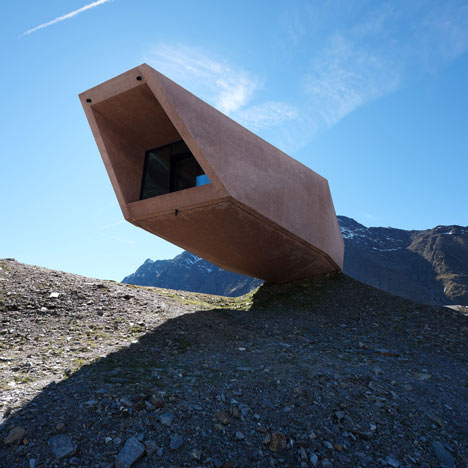
The Timmelsjoch Experience Pass Museum by Werner Tscholl
This faceted museum in the Alps by South Tyrolean architect Werner Tscholl is precariously cantilevered.
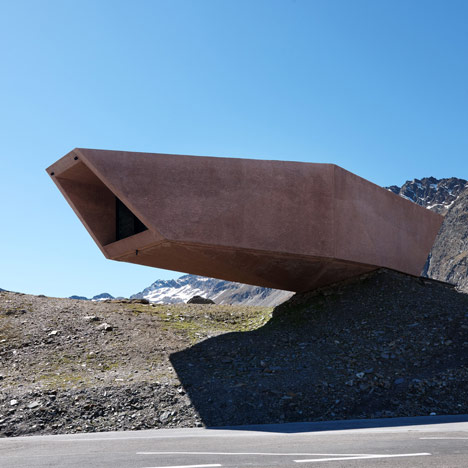
Located along a mountain pass, the Timmelsjoch Experience Pass Museum was constructed to celebrate the road’s fiftieth anniversary.
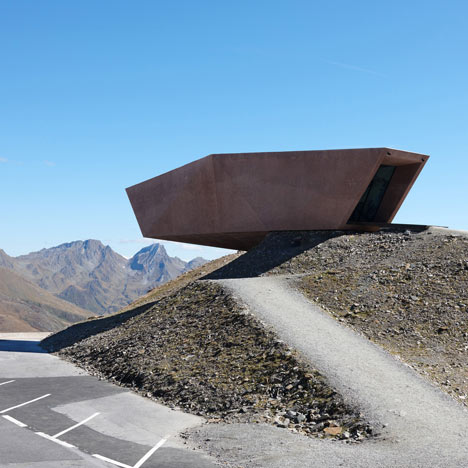
Glass covers the internal walls of the building and is faceted to resemble the inside of an icy cave.
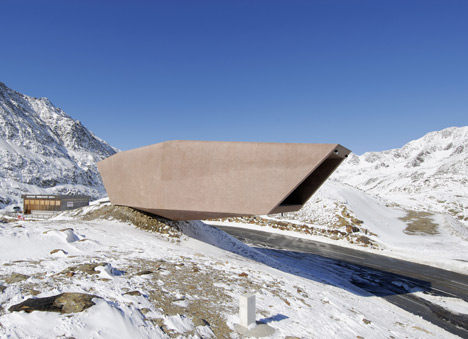
Above: photograph is by the architect
A glass cabinet at the centre of the museum exhibits a scale model of the pass, while images behind the glass explain its history.
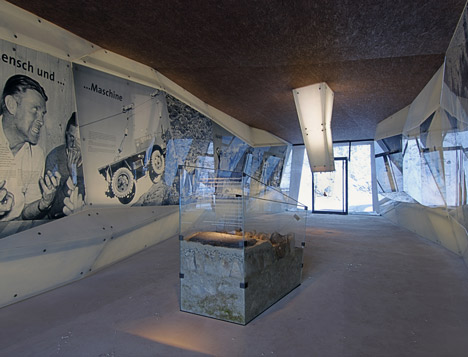
Above: photograph is by the architect
Some other unusual museums from the Dezeen archive include one shaped like a large undulating blob and one with a softly curved shape and wide entranceway - see more museums here.
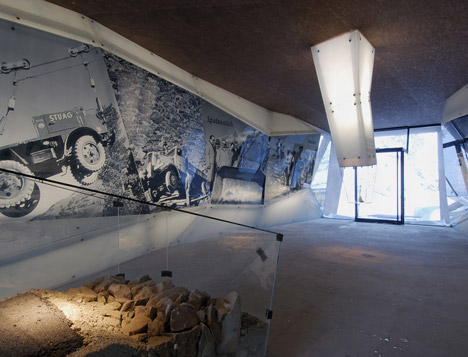
Above: photograph is by the architect
Photography is by Jürgen Eheim, apart from where otherwise stated.
The following text was provided by the museum:
Pass Museum Opened
After its consecration as part of the celebration of the 50-year anniversary of the Timmelsjoch High Alpine Road, the interior of the Pass Museum has now been fully completed.
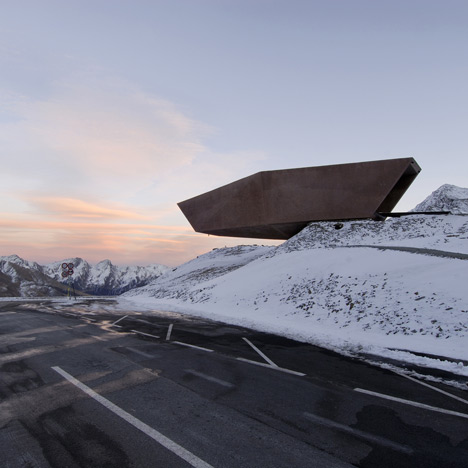
Above: photograph is by Alexa Rainer
Situated at an elevation of 2,509 m, the new construction at the summit of the Timmelsjoch offers visitors quite an impressive sight. The museum, the foundations of which are on the North Tyrolean side but which protrudes 16 metres into South Tyrol, is housed in an "erratic boulder”.
The rocks and boulders around the Timmelsjoch provided the inspiration for the museum’s design. "We didn’t want to taint the mountainsides with any additional colour.
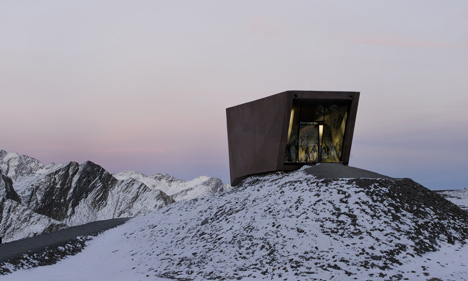
Above: photograph is by Alexa Rainer
As a result of the careful integration of natural materials and colours, all the new elements take a back seat, as it were”, explains the renowned South Tyrolean architect Werner Tscholl with regard to the architectural concept. Tscholl was responsible, among other things, for breathing new life into the "Messner Mountain Museum Sigmundskron” near Bolzano.
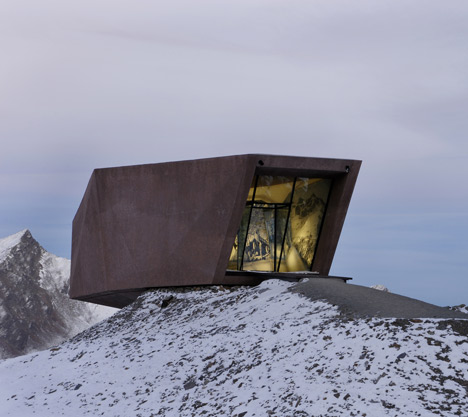
Above: photograph is by Alexa Rainer
Ice Cave
The "erratic’s” interior delivers what the Pass Museum’s exterior promises. Awaiting visitors is an "ice cave” made up of floor-to-ceiling glass formations. The historical pictures printed on the glass, (provided for the most part by Manfred Roilo), offer a striking insight into the arduous construction of the pass and the outstanding feat of achievement of the road’s pioneers.
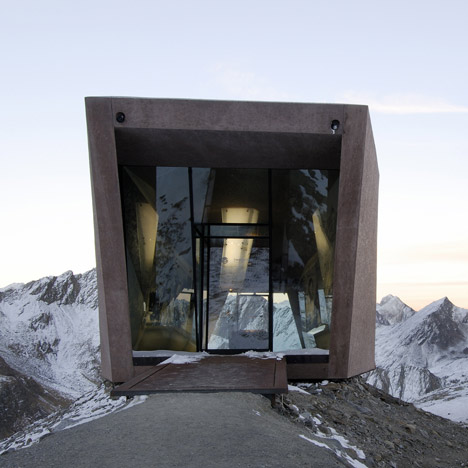
Above: photograph is by Alexa Rainer
Short, easy-to-read trilingual texts take visitors on a journey through the road’s history – from the early vision, to its construction, to its opening in 1959 and to its link with South Tyrol in 1968. The historic model of the road has been recreated 1:1 and is presented in a stalagmite, a glass display case.
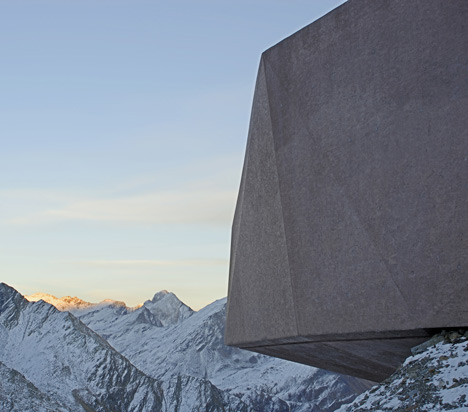
Above: photograph is by Alexa Rainer
Unimaginable in this day and age, the men completed the foundations of the 12 km-long high Alpine road by hand, stone for stone. Counter piece is a stalactite hanging from the ceiling which houses a further highlight. It exhibits the "fibula” (brooch) which was discovered near the summit and which provides evidence that people walked over the pass some 300 years before Christ.